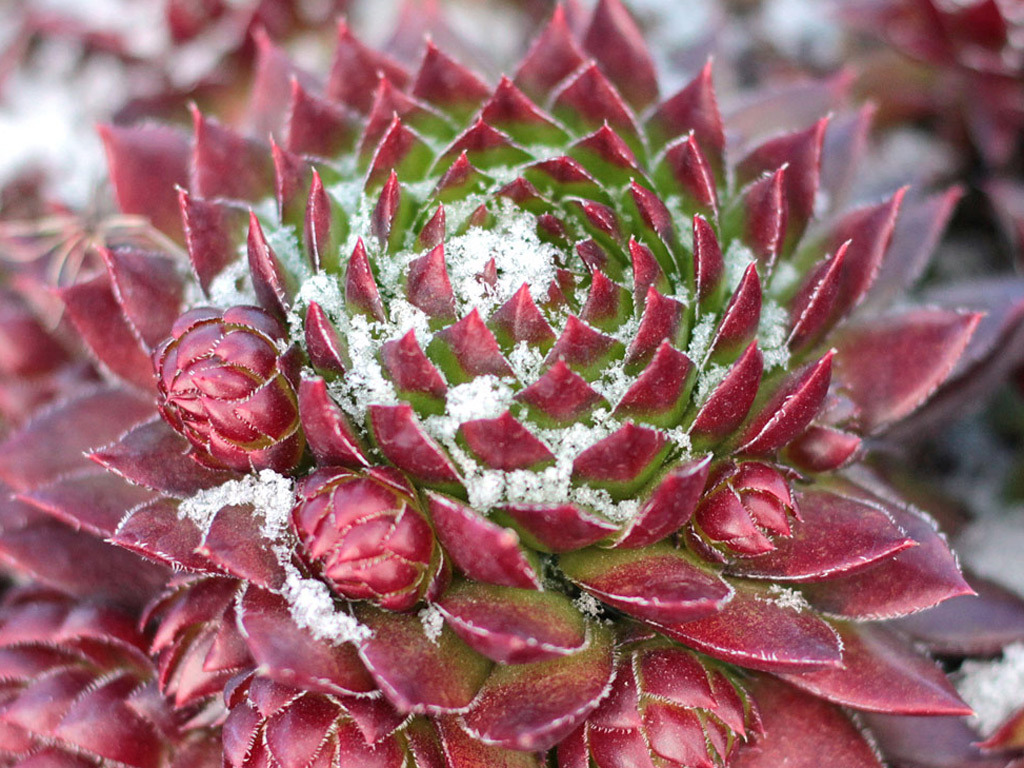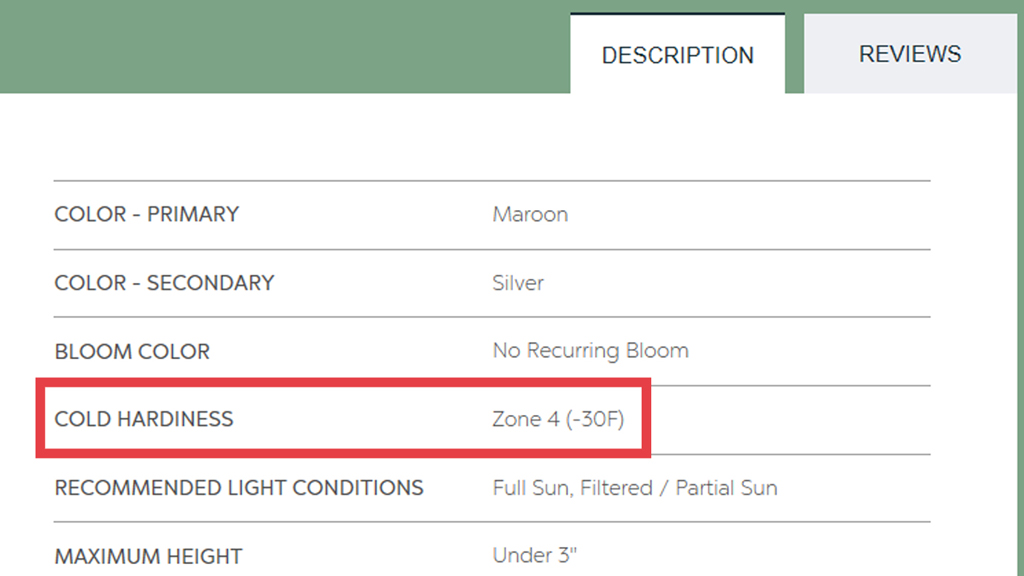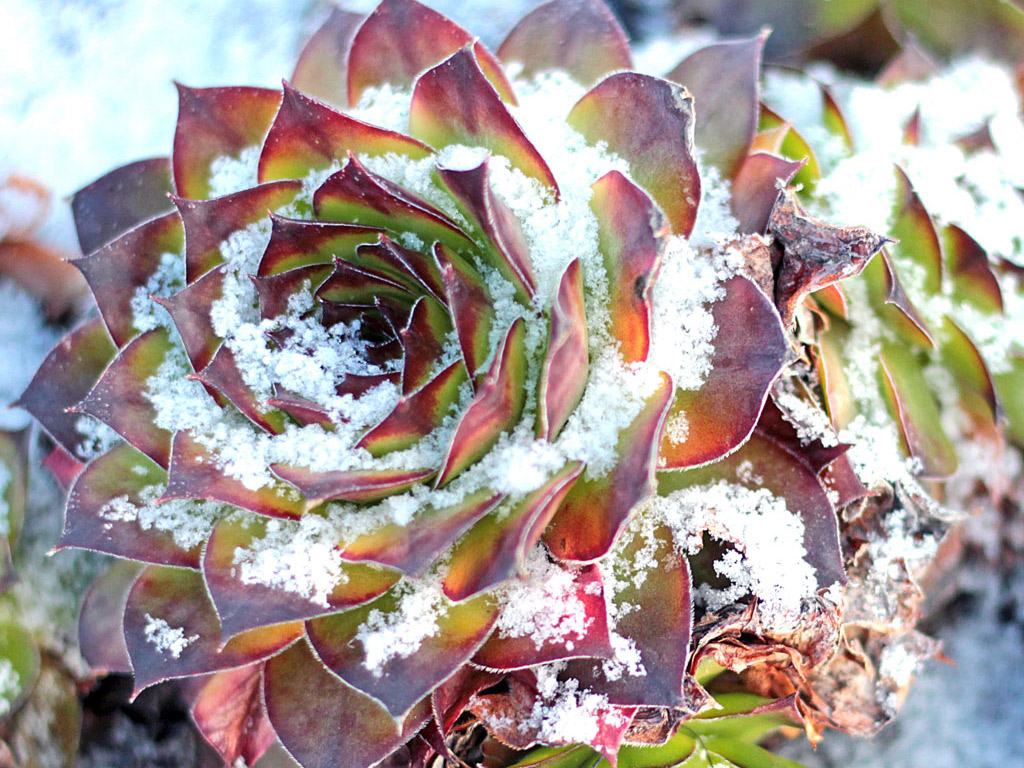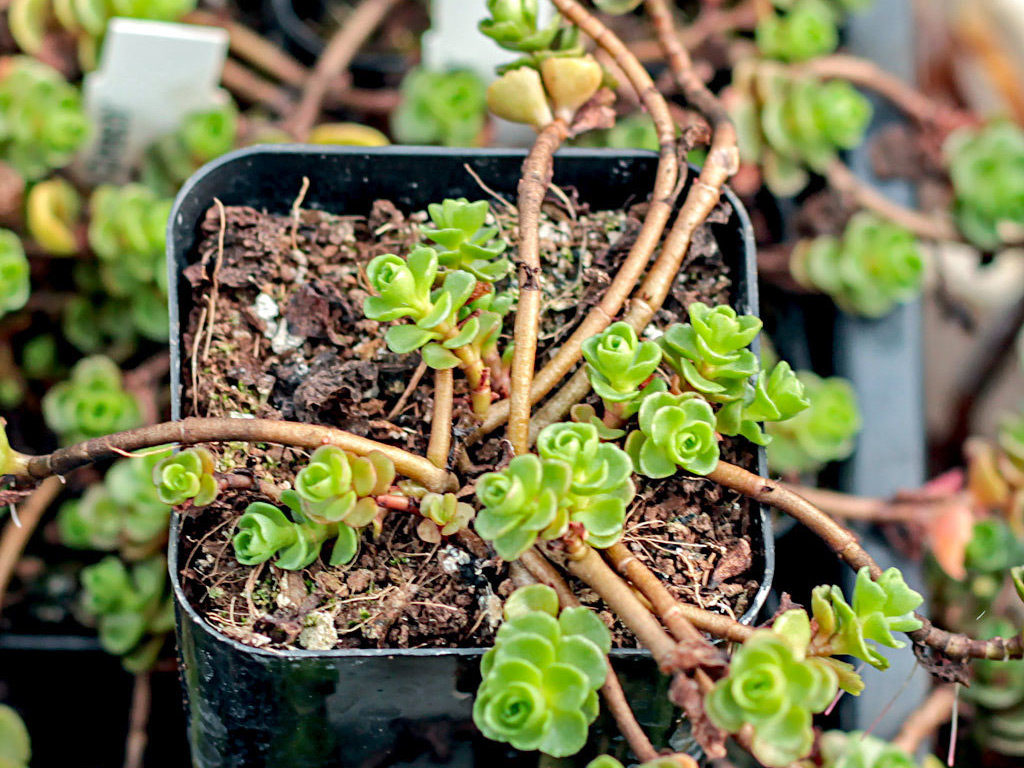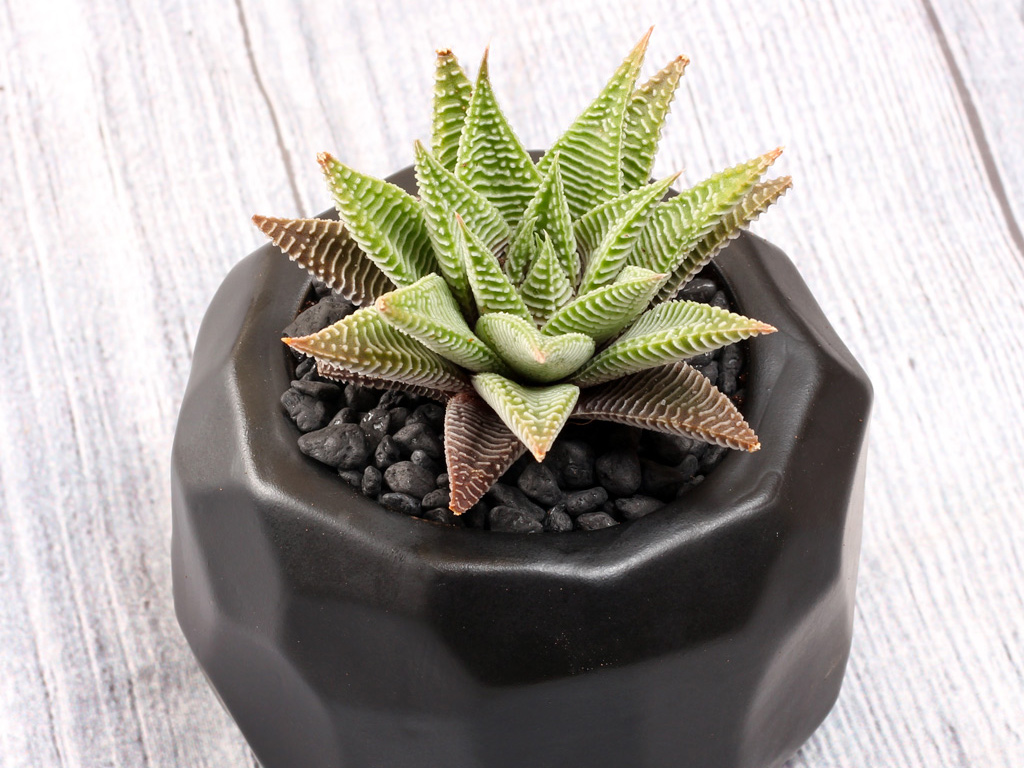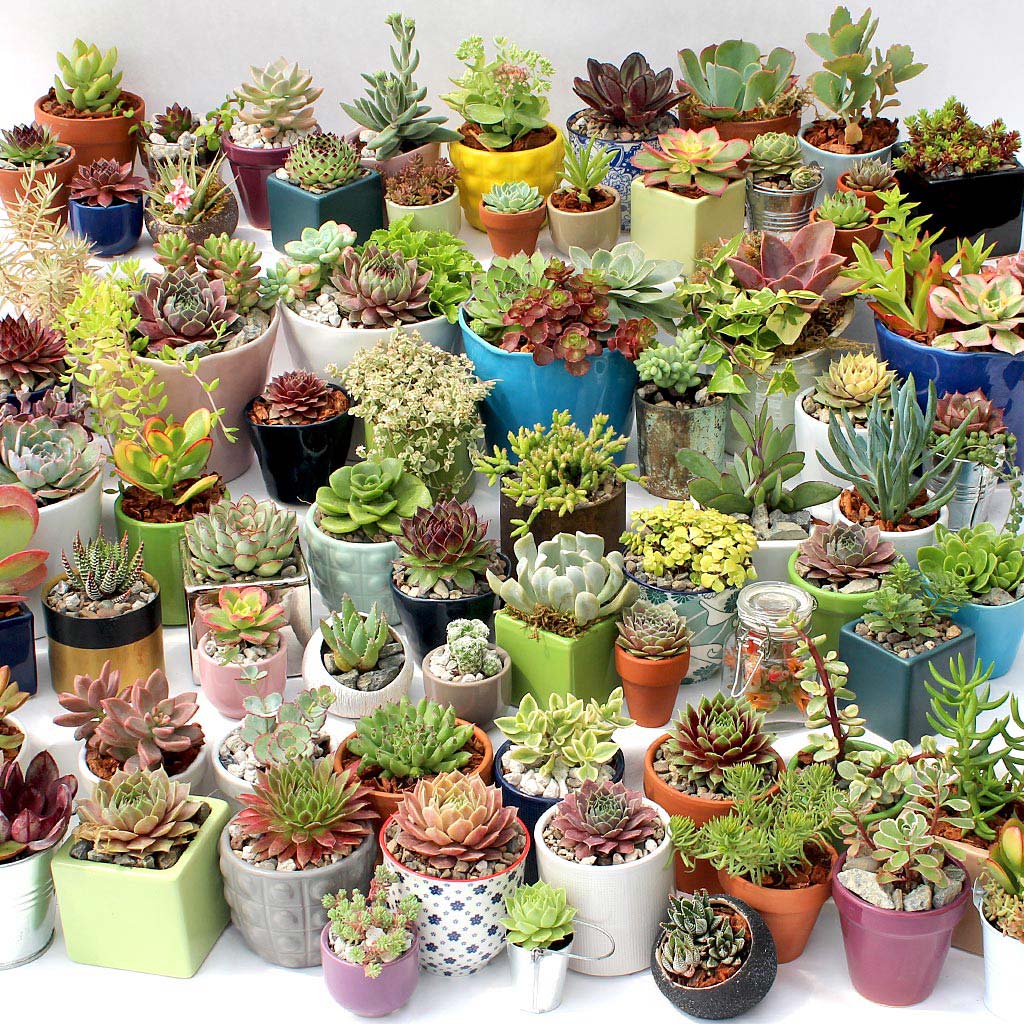Care Guides
How Winter Cold Affects Succulents
Winter can be tough on succulents. At best they look dull, at worst they kick the bucket. But with a few simple care tricks, you can help your succulents make it to spring looking healthy, robust, and vibrant. This guide will cover:
Can Succulents Stay Outside in Winter?
Overwintering Hardy Succulents
Can Succulents Stay Outside in Winter?
Many people are surprised to learn that there are lots of succulents that can live outdoors all year, even in snowy climates. To help you pick the right succulent for your region, we categorize succulents into two groups: "hardy" and "soft".
- Hardy succulents: Tolerate frost and can stay outdoors through below-freezing temperatures. They're ideal for year-round, outdoor growing. In fact, hardy succulents grow better outdoors than in!
- Soft varieties: Not frost-tolerant. These varieties must come indoors before nighttime temperatures get below freezing. They are, however, happy to go back outside when warm, sunny weather returns.
Plant zoning can get more specific too. From just your zip code, find your USDA Grow Zone (based on minimum winter temperature). On every plant's description in our online catalog you can find its "Cold Hardiness". If the number of your zone is equal to or greater than that of the plant, that variety can survive outdoors year-round in your climate. If you live in a zone with a lower number than the plant's Cold Hardiness, it will have to come indoors before temperatures start dropping in the fall.
For easy reference, most of our plants are also shipped with name tags that list the minimum temperature they can tolerate.
|
|
| This Sempervivum heuffelii could grow in zones 4 and higher, but not zones 3 or below |
Recommended Winter Varieties
There are plenty of succulents that can survive outdoors through winter, even in very cold climates. These Hardy Succulents do well in cold, snowy winters. Some of our favorites include Sempervivum heuffelii, which keep vibrant colors for Winter Interest. We also recommend the frost-hardy Sedum varieties, as they make for fantastic ground cover in almost all climates.
For indoor succulents, we recommend Kalanchoe or Senecio, if you have a sunny window or grow light. Can't get enough light? Then Indoor Succulents are for you! Top picks include Haworthia, Jade (Crassula), Gasteria, and Air Plants (Tillandsia) as they tolerate low-light conditions well.
Winter Dormancy
You can think of succulents in three categories: winter growing, partially dormant, or fully dormant. Most types experience at least partial dormancy in winter. While they won't change drastically in appearance, they also don't grow much. Give these types less frequent water and no fertilizer in winter.
There are a few types that go into a deeper dormancy and lose leaves like a deciduous tree. Some (like Sedum kamtschaticum and Orostachys sp.) die-back completely above-ground. Their root systems live on, though, and re-sprout new growth each spring.
On the other end of the spectrum are the varieties that grow during the cooler months, namely Aloe, Haworthia, and Aeonium. Shorter days and lower temperatures signal them to begin their growing season. If you choose to fertilize, winter is the season for it with these varieties.
Overwintering Frost Hardy, Outdoor Succulents
1. (Potentially) Transplant
If you have over a month before the first frost, consider transplanting potted succulents into the ground. In-ground plantings stay better insulated than those in pots. It is, however imperative that your succulents are fully rooted and acclimated before frost hits. If there isn't enough time, simply move pots to locations with morning sun and protection from heavy rainfall.
2. Remove Dried Leaves
Healthy succulents naturally shed basal leaves as they grow new ones above. In climates with cold, wet winters, these leaves can get soggy and rot. Remove them in the fall and your succulents will not only look tidier, they will be more resilient against disease.
3. Protect from Water
You'll find hardy succulents need less frequent water in winter. They should also be protected from water dripping from roofs and trees. A hardy succulent insulated under a blanket of snow can weather the winter well, but one left cold and wet risks rotting. If you get cold, wet winters but no snow, consider moving your succulents under a roof or positioning a clear rain cover at least 18.0" above them.
Overwintering Soft, Indoor Succulents
Soft succulents can get their sunshine fix outdoors each summer, but the need to be back indoors before temperatures drop near freezing. To transition your plants back indoor for winter, pay attention to their light, air, soil, and water conditions.
Light
Indoor spaces inevitably get less sunlight, especially in winter. It's important to put sun-loving succulents near a sunny window. Rotate the pots regularly to prevent stretching and fading. For rooms that just don't get enough sunlight, you can supplement with a grow light or try Indoor Succulent Varieties. We recommend Haworthia, Jade, and Gasteria for especially low light rooms.
Airflow
Without the wind and ventilation of the outdoors, succulents are more vulnerable to pests and rot. You can run fans or open windows to keep air moving, but changes to your soil mix and watering frequency are often enough to speed drying and prevent rot.
Soil & Containers
Bringing succulents in for winter is the perfect opportunity to fix any drainage issues. Use a light, gritty mix like cactus & succulent soil like Bonsai Jack's Gritty Mix. Do not fertilize until spring. Adding rocks to the bottom of a pot will not increase drainage, so we strongly suggest using pots with drainage holes. Ultimate Guide to Succulent Soil
Water
You should find your watering frequency decreasing in winter, as it takes longer for the soil to dry. With the exception the winter growers (Aeonium, Aloe, and Haworthia), most succulents prefer little to no water in winter. As always, only water if the soil is completely dry.
More questions?
Winterizing succulents indoors or out can be simple and hands-off if you:
- Pick the right variety
- Keep it in its preferred location
- Provide plenty of light
- Reduce watering frequency, watering only if the soil is completely dry
It can seem challenging at first, but it gets easier with experience...and we've got plenty of it! Don't hesitate to reach out with questions. We're here to help ensure your succulents make it to spring looking their best.

